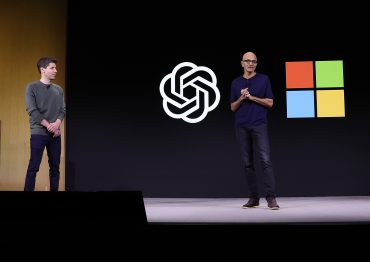

ChatGPT productivity tools target Excel users with automated data analysis and half-price enterprise subscriptions
Key Takeaways
- OpenAI targets Microsoft’s productivity dominance with new ChatGPT agents designed to compete directly with Excel and PowerPoint through automated data analysis and presentation generation
- Usage costs cut by 50% as OpenAI makes advanced AI accessible to broader business markets while the presentation software sector grows toward $16.49 billion by 2032
- Market share battle intensifies with Microsoft’s Office 365 controlling 23.76% of productivity software while OpenAI pursues enterprise subscriptions and licensing revenue streams
Introduction
OpenAI transforms ChatGPT from conversational tool into comprehensive productivity suite competitor, directly challenging Microsoft’s dominance in business software. The company introduces autonomous agents capable of automating data analysis and creating interactive presentations, marking a strategic shift from AI chatbot to enterprise workflow solution.
This expansion targets the core functions of Microsoft Excel and PowerPoint, positioning OpenAI as a formidable competitor in the productivity software market. The move represents OpenAI’s broader ambition to capture business users seeking AI-driven alternatives to traditional office tools.
Key Developments
OpenAI’s new ChatGPT agents automate complex business tasks previously handled by separate applications. The agents handle data analysis functions traditionally performed in Excel while generating dynamic presentations that compete with PowerPoint’s capabilities.
According to The Information, these agents offer real-time voice interaction and seamless integration with internal business systems. The platform enables users to fine-tune AI models for industry-specific requirements, providing customization that legacy tools struggle to match.
OpenAI leverages its generative AI advancements to create autonomous agents that streamline workflow processes within a single platform. This integration eliminates the need for multiple software applications, offering businesses a unified solution for data management and presentation creation.
Market Impact
OpenAI reduces usage costs by up to 50% in some cases, making advanced AI accessible to smaller businesses previously priced out of premium productivity tools. This pricing strategy directly pressures Microsoft’s subscription-based Office 365 model.
The presentation software market projects growth from $6.71 billion in 2025 to $16.49 billion by 2032, representing a 13.7% compound annual growth rate. Microsoft PowerPoint currently holds 1.86% of the productivity software market while Excel commands 8.28%, with Office 365 controlling 23.76% overall.
AI integration drives market expansion as businesses increasingly demand automation and efficiency tools. OpenAI’s entry creates competitive pressure on established players to accelerate their own AI development and integration efforts.
Strategic Insights
OpenAI’s strategy opens new revenue streams through business subscriptions and enterprise integrations while potentially licensing agent technology to other platforms. The company positions itself to capture market share from incumbents by offering superior automation and cost efficiency.
Microsoft faces pressure to accelerate AI integration across its productivity suite to maintain competitive advantage. The software giant’s established user base provides defensive positioning, but OpenAI’s cost advantages and specialized AI capabilities present significant challenges.
Cloud-based and mobile-first productivity tools align with OpenAI’s platform approach, targeting businesses seeking seamless integration and accessibility. The shift toward video-centric and interactive presentations favors AI-driven solutions over traditional static tools.
Expert Opinions and Data
Industry analysts express mixed reactions to OpenAI’s productivity suite expansion. Supporters view the development as democratizing intelligent automation access while boosting productivity across business sectors.
Technology executives emphasize the potential for businesses integrating AI agents to gain significant efficiency and competitive advantages. Early adopters report streamlined workflows and reduced dependency on multiple software applications.
Market skeptics question large-scale adoption challenges, citing integration complexity, user trust issues, and return on investment concerns. Established players like Microsoft maintain cautious optimism while accelerating their own AI development timelines to counter OpenAI’s competitive threat.
Conclusion
OpenAI’s ChatGPT agents represent a fundamental challenge to Microsoft’s productivity software dominance through cost-effective AI automation. The company’s expansion into data analysis and presentation generation creates direct competition in markets worth billions of dollars.
The success of OpenAI’s productivity suite depends on enterprise adoption rates and integration capabilities compared to established alternatives. Both companies now compete for business users seeking AI-enhanced productivity tools in a rapidly evolving market landscape.








